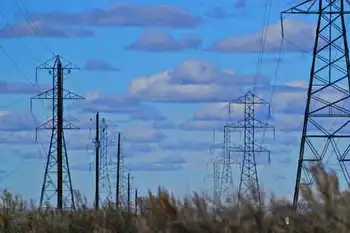House panel takes fresh look at fusion
It was reportedly the first congressional hearing on fusion in 13 years, and Oak Ridge National Laboratory Director Thom Mason was among the witnesses.
Following the hearing, here's what the subcommittee chairman, U.S. Rep. Brian Baird, D-Wash., had to say:
"Fusion energy has successfully powered the sun and the stars for billions of years, so it's no surprise that man would try to recreate and harness this energy source here on earth. However, we all know that a working fusion reactor has been much more difficult to achieve than our atomic-age scientists initially expected. Over the years, there were also some overly optimistic or even fraudulent proclamations by self-identified fusion researchers who skipped the peer review process and went straight to the media, further complicating the popular and political assessment of the extent to which the federal government should continue to support this research."
The subcommittee noted the potential benefits of fusion, which could be a virtually inexhaustible energy source with no threat of catastrophic failure and no release of greenhouse gases, making it environmental friendly.
However, the congressional panel also noted there are challenging issues that must be overcome for fusion to be successful:
• Can we adequately control the charged gas in a fusion system?
• What materials should be used in a fusion reactor?
• When compared to other energy sources, how economical can a fusion reactor be?
• For inertial fusion energy, is it possible for us to build a system that can perfectly implode a pellet of fusion fuel and recover energy at the necessary rate to produce significant net energy?
Mason discussed ORNL's decades-long involvement in fusion research, as well as its current role heading the U.S. contribution to the International Thermonuclear Experimental Reactor being built in France. The international experiment - expected to be twice the size of any previous experiment - is supposed to demonstrate the scientific and technological feasibility of fusion energy.
Besides the United States, other partners are Russia, European Union, Japan, China, South Korea and India.
The ORNL director acknowledged there had been some "teething" pains associated with the project, but he emphasized the importance of ITER. By contributing 9 percent of the cost of the multi-billion project, the U.S. will have access to all the scientific data and the right to propose and carry out experiments, Mason said. Also, U.S. companies will have opportunities to manufacture some of the project's high-tech components, he said.
While ITER is important in moving fusion forward, Mason said it's not the whole enchilada when it comes to developing nuclear fusion as an energy source.
"Our investment in ITER should be complemented by a vibrant domestic fusion program to ensure that the United States is positioned to exploit ITER for research, capitalize on the knowledge gained from ITER, and move forward along the way to commercial fusion power," he said in his prepared testimony. "While ITER represents a path-breaking advance toward the goal of practical magnetic fusion energy, it cannot address all of the questions that must be answered before we can proceed with a fusion power plant."
Related News

The German economy used to be the envy of the world. What happened?
BERLIN - Germany went from envy of the world to the worst-performing major developed economy. What happened?
For most of this century, Germany racked up one economic success after another, dominating global markets for high-end products like luxury cars and industrial machinery, selling so much to the rest of the world that half the economy ran on exports.
Jobs were plentiful, the government’s financial coffers grew as other European countries drowned in debt, and books were written about what other countries could learn from Germany.
No longer. Now, Germany is the world’s worst-performing major developed economy, with both the International Monetary Fund and…




